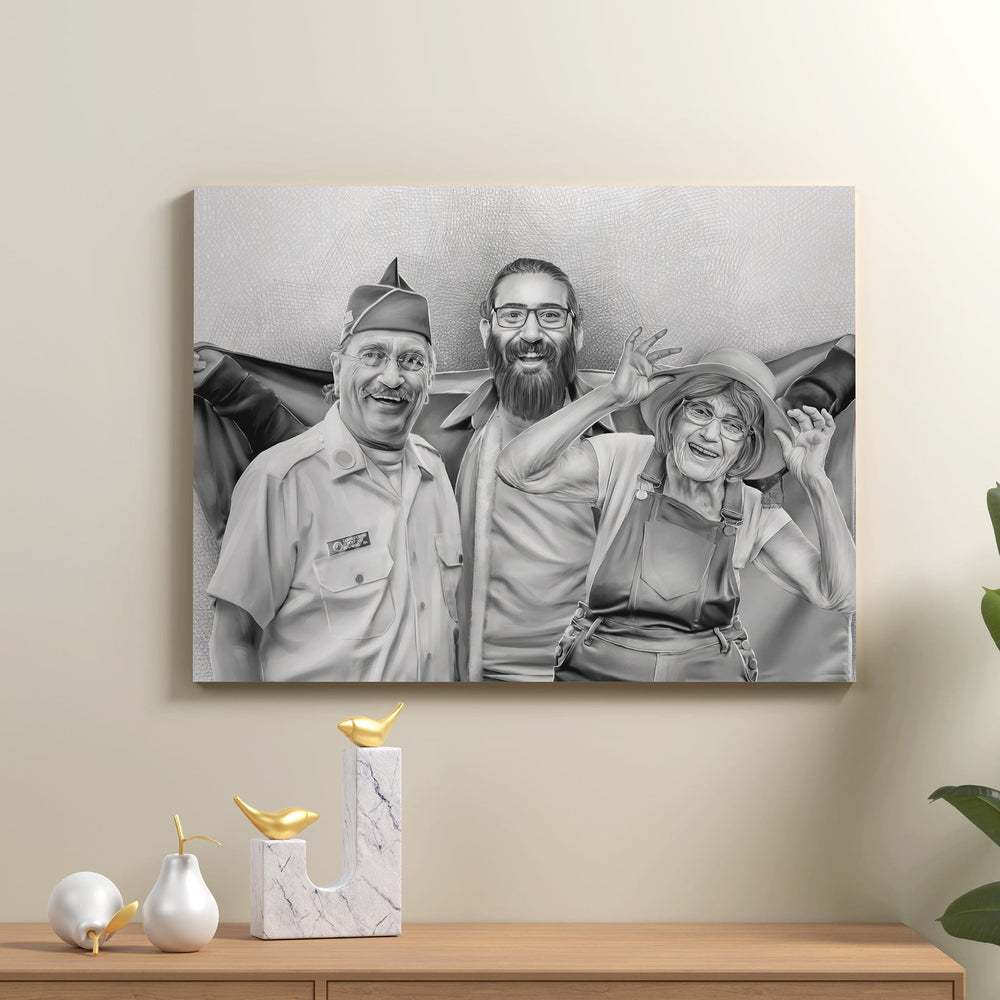Depth in painting is a fundamental aspect that contributes to an artwork's overall visual appeal and effectiveness. Mastering the art of creating depth in paintings can transform a two-dimensional surface into a captivating and realistic scene. In this blog post, we will delve into the concept of depth in a painting and explore various techniques artists use to create layers and depth in their masterpieces.
Explanation of the Concept of Depth in Painting
Depth in painting refers to the illusion of three-dimensionality and space on a two-dimensional surface. This optical effect simulates the perception of distance, volume, and perspective in a painting, making the viewer feel like they are looking at a real-life scene. Creating depth in an image allows artists to give their artworks a sense of realism, and it helps the viewer to visually navigate through the different elements of the piece.
Importance of Depth in Creating a Realistic and Dynamic Painting
Creating depth in painting is essential for achieving a sense of realism and dynamism in the artwork. Depth helps establish the spatial relationships between objects and elements within a scene, making the painting lifelike. It also adds visual interest to a piece, ensuring the viewer's eye is drawn to different areas within the painting. Furthermore, incorporating depth in a painting helps convey the artist's intended message more effectively, allowing for a more immersive and engaging viewing experience.
Techniques for Creating Depth in Painting
Linear Perspective
Linear perspective is a technique that involves using converging lines to create the illusion of depth. Artists can establish a sense of distance and space within the painting by drawing lines connecting to a single vanishing point. Linear perspective is particularly effective for creating depth in architectural and landscape paintings.
Atmospheric Perspective
Atmospheric perspective, also known as aerial perspective, is a technique that uses color and value to simulate the effect of the atmosphere on objects at different distances. In this method, objects in the background are depicted with less contrast, lighter, and cooler colors, while foreground objects are portrayed with more contrast, darker, and warmer colors. This creates the illusion of depth and distance in the painting.
Size and Placement
Manipulating the size and placement of objects within a painting can also help create the illusion of depth. Generally, larger objects are perceived as being closer to the viewer, while smaller objects appear farther away. Placing objects lower in the composition can also make them seem closer while positioning them higher can create the impression of distance.
Overlap and Layering
Overlapping and layering elements within a painting can create the illusion of depth by establishing spatial relationships between objects. The artist can convey a sense of distance and depth within the composition by placing one object in front of another.
Textural Effects
Using textural effects in a painting, such as in a coal painting or a canvas painting, can also contribute to the perception of depth. Applying thicker paint or more pronounced brushstrokes in the foreground while using smoother, more delicate brushstrokes in the background can create a sense of distance and space within the artwork. This technique is particularly effective in oil painting, where artists can build up layers of paint to create varied textures that enhance the illusion of depth.
Examples of Paintings with Great Depth
Throughout art history, numerous artists have demonstrated exceptional skill in creating depth within their paintings. Here are a few examples of artworks that showcase the successful use of depth-creating techniques:
Leonardo da Vinci - "The Last Supper"
Leonardo da Vinci's iconic painting "The Last Supper" is a prime example of linear perspective, with the architectural elements of the room converging towards a single vanishing point. This technique creates a sense of depth and space, drawing the viewer's eye toward the central figure of Jesus Christ.
Claude Monet - "Water Lilies"
The "Water Lilies" series showcases the effective use of atmospheric perspective to create depth. Monet used cooler, more muted colors in the background and warmer, more vibrant colors in the foreground to simulate the effect of the atmosphere on objects at different distances.
Jan van Eyck - "The Arnolfini Portrait"
Jan van Eyck's "The Arnolfini Portrait" successfully uses size and placement, overlap and layering, and textural effects to create depth. The detailed rendering of objects in the foreground and the clever positioning of the convex mirror in the background contribute to the composition's sense of space and depth.
Rembrandt van Rijn - "The Night Watch"
Rembrandt's "The Night Watch" is a striking example of using light and shadow to create depth in a painting. The masterful manipulation of chiaroscuro emphasizes the central figures and gives the viewer a sense of the spatial relationships between the subjects and their surroundings.
Andrew Wyeth - "Christina's World"
This painting is a beautiful example of depth achieved through size, placement, color, and value. The figure in the foreground, Christina, is larger and more detailed than the objects in the background, while the fading colors and values in the distant house and fields help to create a sense of distance and space in the composition.
Final Thoughts
Creating depth in painting is essential for artists who wish to produce realistic and dynamic artworks. By mastering the techniques of linear perspective, atmospheric perspective, size and placement, overlap and layering, and textural effects, artists can achieve a greater sense of depth and space in their paintings. This enhances the artwork's visual appeal and allows for a more immersive and engaging viewing experience.
Order Your One-of-a-Kind Painting At Memorialize Art
Experience the magic of depth in painting with custom artwork from Memorialize Art. Our talented team of artists is dedicated to creating unique, one-of-a-kind paintings that showcase exceptional depth and capture the essence of your memories and experiences. Don't miss the opportunity to own a captivating piece of art that will be treasured for years. Visit our website today and order your unique painting at Memorialize Art.














